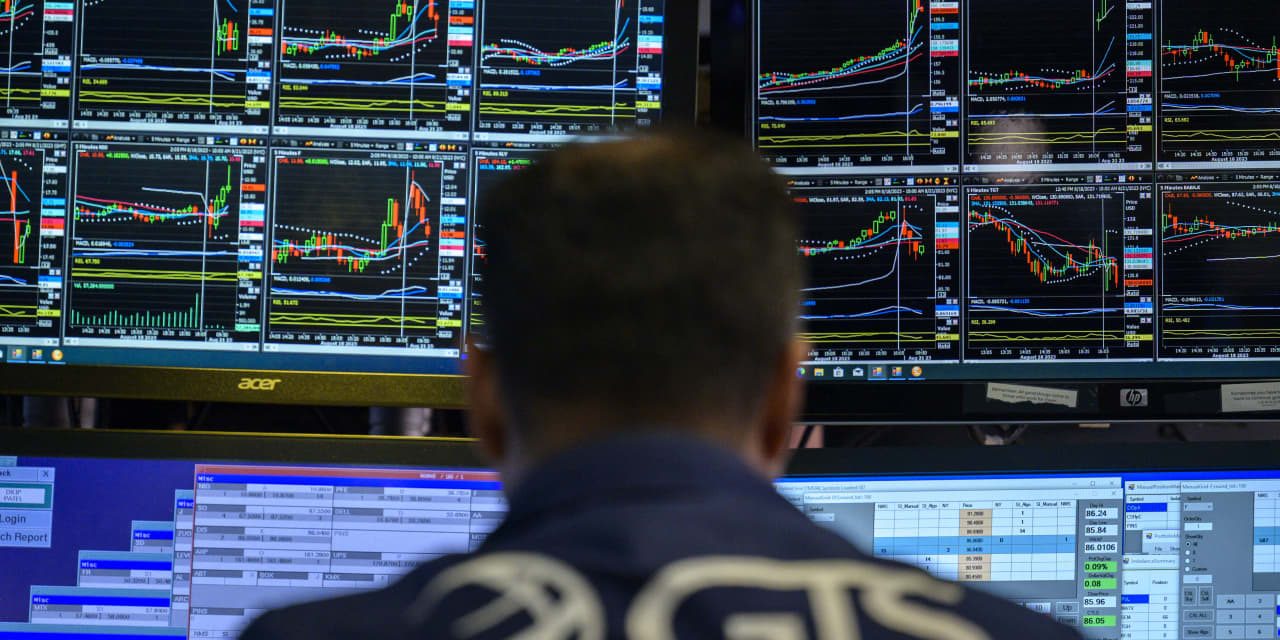War—what is it good for? Usually not markets. So far, however, rising geopolitical tensions this year haven’t been enough to derail investors’ attention, although it creates one more speed bump on stocks’ road higher.
The recent surprise Hamas attack on Israel has rapidly escalated hostilities in a region already beset with violence, so it’s no surprise that nerves are rattled. It also came at a time when much of the world is still grappling with the impact of the Russian invasion of Ukraine, an ongoing conflict stemming from early 2021. In the U.S., funding to help both Ukraine and Israel remains divisive along party lines.
While war is invariably tragic, it can also be traumatic for markets. ICAP Chief Technical analyst Walter Zimmerman Jr. writes that much as the Nasdaq Composite peaked in 2021, the same year as Russia’s invasion, it did in 2001 as well, the year of the September 11 attacks and the U.S. invasion of Afghanistan. Similar patterns between market tops and geopolitical shocks are obvious every two decades, he adds, dating back throughout the history of the modern market.
That begs the question, which comes first, the bear market or the war? That’s the wrong way to frame the issue, however, Zimmerman argues, as he believes they arise together when societies feel they are devoid of other options.
“A bull market in equities is driven by hopes that the future will be better than today,” he writes. “A bear market in equities is driven by fears the future will be worse than today. Collective stress and tension excel at turning hopes into fears.”
There’s no shortage of fear in today’s world, of course, although for now many investors are still more concerned with the Federal Reserve than fighting.
Investors are of course worried about the conflict, but as Seven Report’s Founder and President Tom Essaye writes, their flight to safety last week after the initial attack led them to Treasuries, pushing the prices of those higher, which consequently had the opposite effect on their payouts. “An escalation in the military conflict between Israel and Hamas sent yields lower, and regardless of the reason, lower yields have been good for stocks recently.”
Indeed, high interest rates, which have pushed up bond yields, have been weighing on stocks lately. That’s because many investors are happy to put their money in virtually risk-free assets versus hoping for a slightly higher, but not guaranteed return from equities.
More broadly though, Essaye argues that the main reason that the market has proven relatively resilient amid the drums of war is that “investors have once again embraced the idea that the Fed is done with rate hikes.”
In the face of cooling inflation, ongoing evidence of a soft landing, and consistent commentary from Fed officials in recent months, many strategists feel confident in that prediction. Thus Essaye argues that it’s unlikely that the
S&P 500
will fall below 4,200—although it also will struggle to break above 4,450.
“Bottom line, this remains a ‘noisy’ market, and it’s being made even more so with the Iran/Hamas war,” he concludes. “But for all the noise in the macroeconomic environment, as long as the three pillars of the rally remain in place, the downside risk should be limited and the S&P 500 largely rangebound until we learn 1) If a soft/no landing is truly going to occur, 2) If inflation can decline to the Fed’s target or bounce back, and 3) If the Fed is truly done with rate hikes and when cuts might occur.”
For his part, Zimmerman is not particularly confident in the central bank in general, noting that the “Fed has been blindsided by every financial crisis the U.S. has faced since the Fed began in 1914.”
That may be so, but trying to fight the Fed is often its own kind of unwinnable war.
Write to Teresa Rivas at [email protected]
Read the full article here













